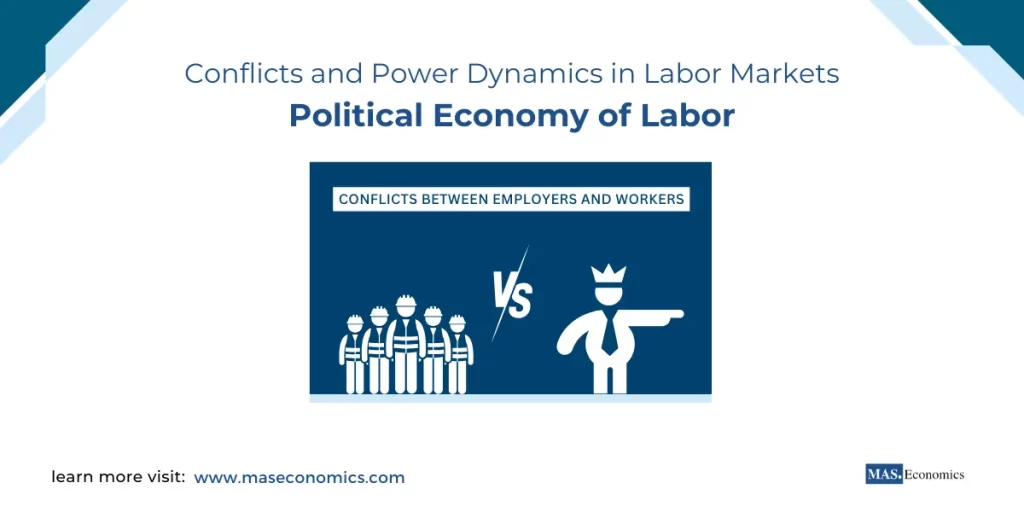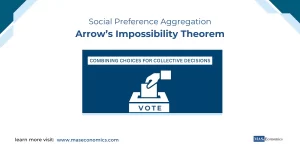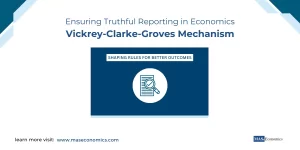The political economy of labor offers insight into the power dynamics between employers and workers. Historically, the labor market has been marked by tension and negotiation driven by conflicting interests. Employers aim to maximize productivity and minimize costs, while workers fight for higher wages, fair benefits, and better working conditions. These differing priorities have shaped an ongoing conflict central to the evolution of labor markets worldwide.
The dynamics between employers and workers reveal the power relations and conflicts that shape labor markets. Additionally, institutions, labor unions, and political factors play crucial roles in influencing labor outcomes over time.
Understanding the Political Economy of Labor
Political economy refers to the interaction between politics, economics, and societal influences, providing a framework for analyzing power relations within labor markets. In the context of labor, political economy looks at how labor policies, institutional arrangements, and the balance of power between employers and employees affect wages, working conditions, and employment levels.
One of the primary insights provided by political economy is that the relationship between employers and workers is inherently imbalanced. Employers generally have more resources and greater negotiating power, particularly in sectors with high unemployment or where the supply of labor exceeds demand.
Conflicts Between Employers and Workers
The conflicts between employers and workers can be divided into several key areas:
Wages and Compensation
The most prominent point of conflict is over wages and salaries. Workers seek compensation that reflects the value of their labor, allowing them to maintain a decent quality of life. Employers, on the other hand, aim to minimize costs in order to maximize profits. In industries where labor is abundant, employers are often able to suppress wages, leveraging their superior bargaining power.
As the political economy model suggests, wage determination is largely influenced by the balance of power. When employers dominate the market—such as in sectors characterized by low skills and high competition among workers—wages tend to be suppressed. Conversely, in markets where workers possess unique or high-demand skills, they can negotiate better compensation.
Benefits and Working Conditions
Another significant area of contention lies in the provision of benefits and working conditions. Workers desire comprehensive benefits packages that include healthcare, paid time off, and retirement plans. These benefits not only provide security but also ensure a better work-life balance. Employers, however, often see such benefits as additional costs and may look for ways to minimize or avoid offering them.
A notable example is the rise of the gig economy, where workers are classified as independent contractors, which allows employers to bypass the legal obligations associated with traditional employment. This flexibility benefits companies by reducing costs, but it often leaves gig workers without access to essential benefits like health insurance and paid leave.
Job Security
Job security is another critical area where the interests of employers and workers diverge. Employers often prefer to retain flexibility in hiring and firing to respond quickly to market changes. This flexibility allows them to scale operations up or down based on demand but creates significant uncertainty for workers. In many cases, employees must bear the emotional and financial stress associated with precarious employment, which can have lasting negative effects on their quality of life.
Political economists argue that the power imbalance here is evident: employers benefit from the ability to easily shed labor costs, while workers face the burden of insecurity.
Power Dynamics and Their Implications
The political economy of labor emphasizes that power dynamics are central to understanding labor conflicts. The relative power of workers and employers is shaped by several factors, including:
Unionization and Collective Bargaining
Labor unions have historically been one of the most powerful tools available to workers for addressing power imbalances. By banding together, workers are better able to negotiate for fair wages, safer working conditions, and other benefits. However, in recent decades, union membership has been in decline in many countries, including the United States, due in part to political and economic pressures from employers seeking to reduce labor costs.
The decline in union power has led to a situation where workers are less able to collectively bargain for improved conditions, which has contributed to stagnating wages and increased inequality.
Political and Legal Factors
Political decisions, such as the passing of right-to-work laws, have also had a profound impact on labor relations. Such laws make it more difficult for unions to collect dues from workers they represent, weakening their financial position and ability to effectively negotiate on behalf of their members. These policies often tilt the balance of power further in favor of employers.
In contrast, countries where labor laws protect union activity and where social policies support workers—such as providing unemployment benefits and retraining programs—tend to see more equitable labor outcomes. For example, in countries like Germany and Sweden, strong labor protections and the presence of labor-oriented political parties have helped maintain a more balanced power dynamic between employers and workers.
Historical and Contemporary Conflicts
Historical Conflicts: The Industrial Revolution
The roots of labor conflict can be traced back to the Industrial Revolution, a period during which the rapid growth of industry led to significant exploitation of labor. Workers faced long hours, dangerous working conditions, and meager pay, while factory owners accumulated vast wealth. It was during this period that the first labor unions began to form, driven by the need to protect workers’ rights.
The political economy perspective views this era as the foundation for understanding the conflicts that still persist in labor markets today. The struggle between maximizing profits and ensuring fair treatment for workers has remained a defining feature of labor markets worldwide.
Contemporary Conflicts: The Gig Economy
In recent years, the rise of the gig economy has introduced new dimensions to the conflict between employers and workers. Companies like Uber and DoorDash offer workers flexibility, but this comes at the cost of job security and benefits. Gig workers are often classified as independent contractors, which means they are not entitled to the same rights and protections as traditional employees.
This classification benefits companies by allowing them to reduce labor costs, but it often leaves gig workers in a precarious situation, lacking health insurance, paid leave, and other standard benefits. Political economists argue that this trend represents a new form of labor exploitation, enabled by weak labor protections and the prioritization of corporate profits over worker welfare.
Mechanisms of Worker Motivation
Employers use a variety of mechanisms to motivate workers, which can generally be divided into two categories: stick and carrot approaches.
Stick Approach
The stick approach involves the use of punitive measures to ensure productivity. This could include tight monitoring, threats of termination, and low wages. Employers using this strategy focus on minimizing costs, often leading to high employee turnover, low morale, and increased dissatisfaction among workers. Examples of this approach are commonly found in low-wage industries, such as fast food or manufacturing, where the supply of labor exceeds demand.
Carrot Approach
In contrast, the carrot approach focuses on positive incentives such as bonuses, profit-sharing, job security, and opportunities for advancement. Companies like Google are known for using this approach, offering attractive benefits and a positive work environment in order to retain highly skilled workers. By investing in employee satisfaction, these employers aim to increase productivity and reduce turnover, which ultimately benefits both the company and the workforce.
Conclusion
The political economy of labor shows that the labor market is not just a space for economic exchange but also a contested arena shaped by power dynamics. Conflicts between employers and workers—over wages, benefits, and working conditions—are influenced by political, economic, and social factors.
Balancing these interests requires strong institutions, supportive labor policies, and a commitment to fair treatment. As labor markets evolve with the gig economy and technological advances, addressing these conflicts will be key to ensuring equitable outcomes for all participants.
FAQs:
What is the political economy of labor?
The political economy of labor analyzes power dynamics, conflicts, and institutional influences in labor markets, focusing on how employers and workers negotiate wages, working conditions, and employment terms.
Why do conflicts arise between employers and workers?
Conflicts stem from differing priorities: employers aim to minimize costs and maximize productivity, while workers seek fair wages, benefits, and job security. These opposing interests create tension in the labor market.
What role do unions play in labor markets?
Unions help balance power dynamics by enabling collective bargaining for higher wages, better working conditions, and benefits. Declining union membership has weakened workers’ negotiating power in many regions.
How does the gig economy impact labor dynamics?
The gig economy prioritizes flexibility for employers by classifying workers as independent contractors, often denying them access to benefits, job security, and protections that traditional employees receive.
What are stick and carrot approaches in worker motivation?
The stick approach uses punitive measures like tight monitoring and low wages to ensure productivity, often leading to dissatisfaction. The carrot approach offers incentives like bonuses and job security to motivate workers and improve retention.
How have historical events shaped labor conflicts?
The Industrial Revolution highlighted the exploitation of labor, leading to the formation of unions to protect workers’ rights. Contemporary conflicts, such as those in the gig economy, reflect ongoing struggles over fair treatment and compensation.
How do political and legal factors influence labor markets?
Labor laws and policies shape power dynamics. Right-to-work laws and weak labor protections favor employers, while robust union protections and social policies, like those in Germany or Sweden, promote equitable labor outcomes.
Why is job security a critical issue for workers?
Job security reduces financial and emotional stress for workers. However, employers often prioritize flexibility, leading to precarious employment that benefits firms at the expense of workers’ stability.
Thanks for reading! Share this with friends and spread the knowledge if you found it helpful.
Happy learning with MASEconomics




